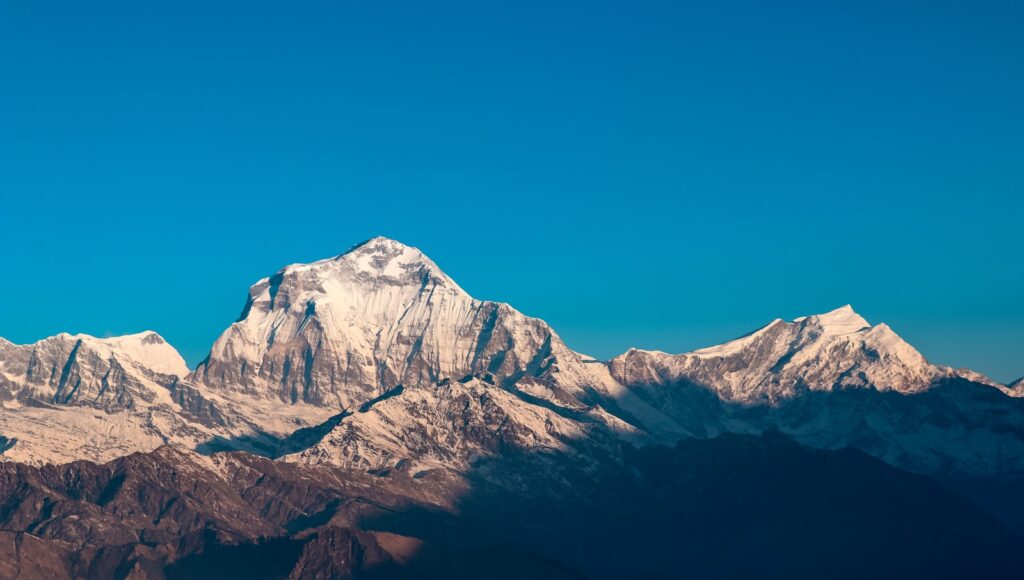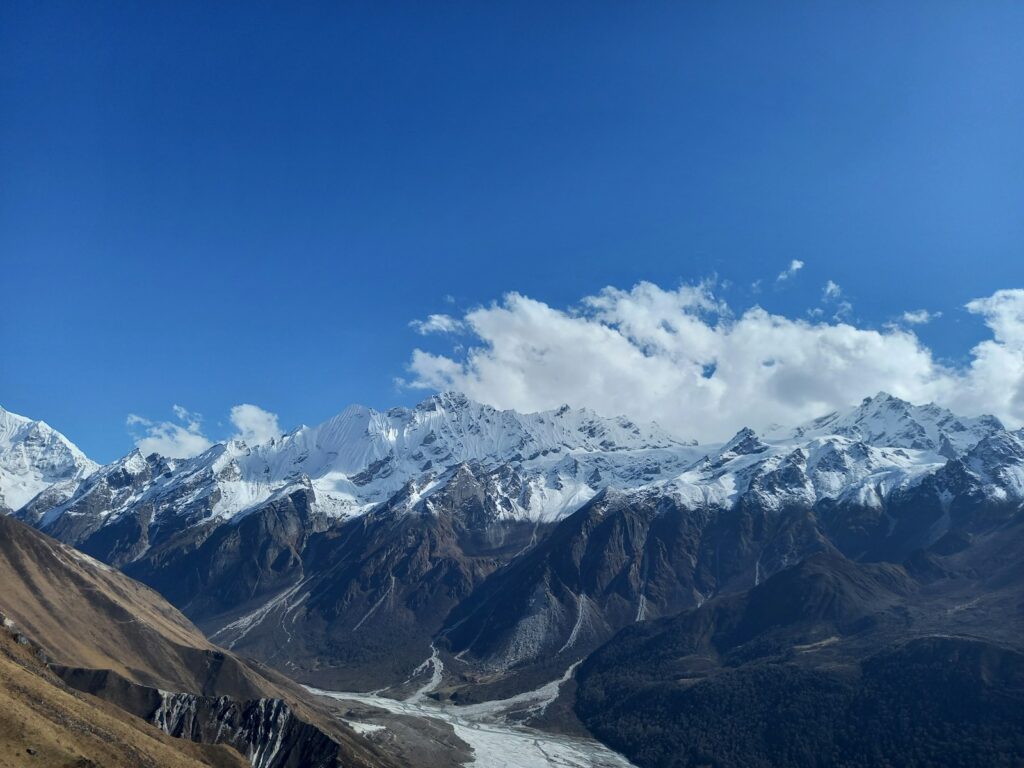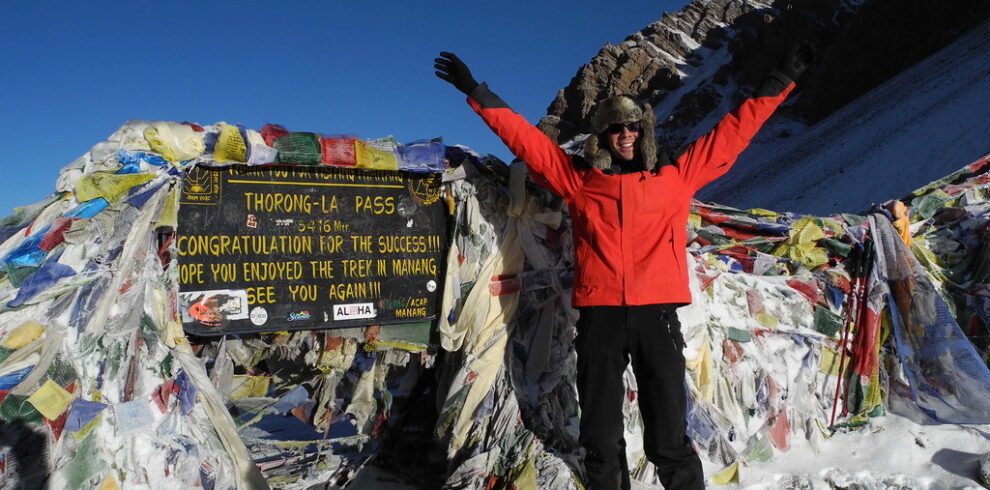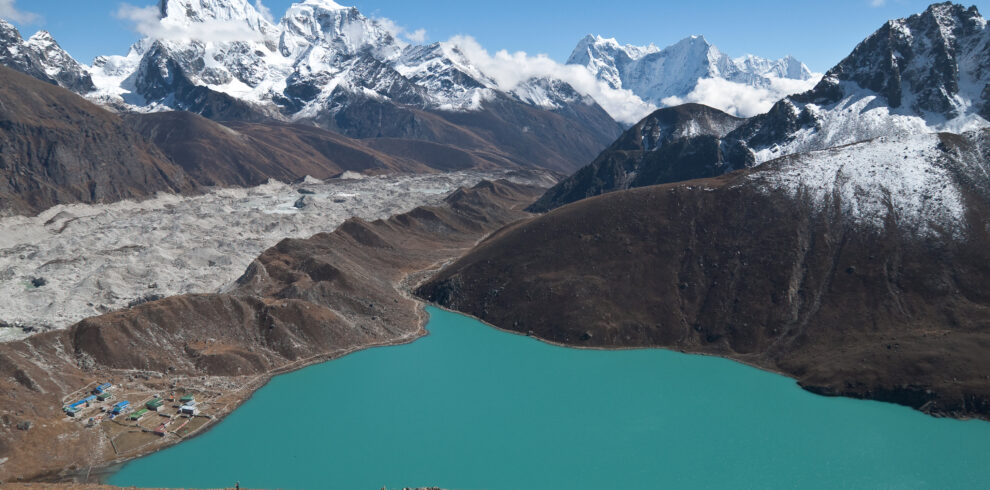Trip Info
-
Nepal
-
Annapurna Region
-
Trekking
-
10 Days
-
Spring - Autumn
-
Easy
-
3210 Meters
-
1 - 32 People
-
30 Days Before Start
Overview
Gokyo -Cho La pass trekking is one of the adventurous treks in the Everest region. This trek includes Gokyo Ri, Cho La pass and Everest Base camp and is also known as Everest circuit trekking.
Annapurna Panorama trek is popularly known as Poon hill trek. It is a short tea house trek in Annapurna region offering the majestic views of beautiful mountains like Mt. Dhaulagiri, Mt. Annapurna, Mt. Manaslu, Mt. Machhapuchre and many others along with the diverse culture of different ethnic community. Annapurna Panorama trek is naturalists’ heaven due to its incredible altitudinal range and blend of temperate climate with the white Himalayan backdrop. In addition to it world’s deepest gorge, Kali Gandaki and magnificent panoramic view from Poon Hill will be the focus of your journey.
Trip Highlights
- Spectacular sunrise from Poon Hill over the Himalayas
- Panoramic view of the beautiful mountains like Mt. Dhaulagiri, Mt. Annapurna,, Mt. Machhapuchre and many more
- Gurung culture, Rhododendroohn forests of Ghorepani.
- Easy low altitude trekking with amazing natural views
Itinerary
This is your first day in Kathmandu. Our airport representative will pick you up from the airport and transfer you to designated hotel in the city. Depending on your flight times you have the day free for exploration or visit the local streets of Kathmandu. In the evening you will be meeting with your guide and have introduction with him. The evening is free. Overnight at hotel
Morning 6:15 Guide will pick up you from the hotel then 15 minute walk to the tourist bus station, morning 07:00 bus will departure from Kathmandu on the way you can see the landscape with Trishuli river around 6/7 hour drive reach in pokhara city overnight at hotel.
In morning 7 am drive to Nayapul (1070m.) for an hour then trek to Tikhedhunga (1577 m.) or Ulleri(2200 m) around 4/5 hour walk, overnight at guest house with full board package.
Morning starting with a climb to a series of stone steps for an hour to Ulleri village, a moderate size Gurung village of traditional Nepali hill with slated roofs. From here walk leads to a slow climb into pristine and cool rhododendron, pine forest area to reach Ghorepani village located on a high ridge within beautiful rhododendron trees.
Early morning before sunrise hike to Poon Hill view point for stunning views of sunrise over range of mountains from world 7th highest Dhaulagiri-10th highest Annapurna with range of peaks includes world 8th highest Manaslu with towering Machhapuchhre peak “Fish Tail”. After an exciting and marvelous time with memorable views from Poon Hill, return to Ghorepani and continue climb into green forest of rhododendron for an hour to Deurali top and then descend into a gorge through cool forest to Tadapani for overnight stop.
The trail descends down through the rhododendron forest and you can hear the birds chirping. After walking down about 45 minutes the trail goes very steep downhill through the terraced field and a suspension bridge over the Kimrong Khola.The trail ascends up and then straight walk to Chhomrong at the elevation of 2140 m. Trek from Tadapani to Chhomrong will take around five hours.overnight at guesthouse.
From Chhomrong, you will cross few suspension bridges and many waterfalls on the way. The trail continues through scattered trees and leads steeply up to the ridge at Deurali. From here you will enjoy the views of Mt. Dhaulagiri, Annapurna and the right side of the range.Then the trail drops down and takes to scenic village Pothana. You can explore the traditional village or watch the sunset in the mounts.Overnight at guesthouse.
It is the last day of the trek and you will hike around 5 hours down to Phedi. Leaving behind the snow-capped mountain in background you will head towards to Pokhara with the good memory of the trek.After reaching the Pokhara, you will take a short refreshing break and visit the lake city of Pokhara. You will spend the night at the hotel.
Morning a scenic drive to back Kathmandu with grand memories of this fantastic and exciting time on Annapurna Base Camp & Poon Hill trekking, an interesting six hour brings you back in Kathmandu with afternoon free at leisure for shopping souvenirs.
Today our airport representative will come to meet you at the hotel to escort you to Kathmandu International Airport for your final departure.
Includes
Cost Includes
- Accommodation in three star category hotel as per the itinerary in the cities with complimentary breakfast.
- Three meals a day (Breakfast, Lunch, Dinner) whilst on trekking.
- Cozy guesthouse accommodation whilst on trekking as per the itinerary.
- All necessary government and local permits, ACAP entry fees.
- TIMS registration card.
- An experienced fluent English speaking guide, licensed by ministry of Culture, Tourism & Civil Aviation.
- Kathmandu - Pokhara - Kathmandu transportation by tourist bus (optional flight).
- Guide food, accommodation, clothing, salary & insurance.
- Pokhara - Nayapul - Pokhara transportation by private vehicle.
- Down jacket, four seasonal sleeping bag, duffel bag and trekking map (down jacket and sleeping bag are to be returned after trip completion).
- Airport transfers during the whole trip as per the itinerary.
- Comprehensive first aid medical kit carried by the guide.
- Farewell dinner in Kathmandu at typical Nepali restaurant.
Cost Excludes
- International Airfare, visa fees and re-entry visa fees if applicable
- Meals at Kathmandu and any other cities except mentioned.
- Experienced and equipped trekking porter/s (one porter carry for 2 guest's luggage,up-to 25 kgs).
- Personal nature expenses like bar bills, beverage bills, telephone bills, laundry etc.
- Your Travel Insurance and rescue evacuation, medical costs.
- Services not mentioned in ' ThePrice Includes' section ( Please ask us if you are confused about any services).
- Gratitude (tip) for staff.
FAQs
Yes, most treks in Nepal require one or more permits. The most common are the TIMS (Trekkers’ Information Management System) card and area-specific permits like the Annapurna Conservation Area Permit (ACAP) or Sagarmatha National Park Permit. Restricted areas such as Upper Mustang or Manaslu require special permits and must be arranged through registered trekking agencies. Carrying the correct permits is essential, as checkpoints are common along trails.
The ideal trekking seasons are spring (March to May) and autumn (September to November). These months offer clear skies, mild temperatures, and breathtaking mountain views. Spring is known for blooming rhododendrons, while autumn offers the best overall weather conditions. Monsoon (June to August) brings heavy rains, and winter (December to February) can be extremely cold and snowy at higher altitudes.
Fitness requirements vary depending on the trek, but a good baseline of cardiovascular health and endurance is helpful. Treks range from easy, low-altitude hikes like Ghorepani Poon Hill, to challenging high-altitude circuits like Everest Base Camp or Manaslu Circuit. Regular walking, stair climbing, or hiking in advance can prepare you well. Mental stamina is equally important, especially on longer or more remote trails.
Yes, altitude sickness, or Acute Mountain Sickness (AMS), can affect anyone above 2,500 meters, regardless of fitness or experience. Common symptoms include headache, nausea, dizziness, and shortness of breath. To reduce the risk, it’s essential to acclimatize properly, ascend gradually, stay hydrated, and avoid alcohol. In serious cases, descending is the only effective treatment, and travel insurance should cover emergency evacuation if needed.
Independent trekking is allowed in many areas like Annapurna, Everest, and Langtang. However, restricted areas such as Upper Mustang, Manaslu, and Dolpo require you to trek with a registered guide and at least two trekkers. Even where not mandatory, many trekkers choose to hire a guide for navigation and cultural insight or a porter to reduce physical strain. Going with a guide also adds a layer of safety and local support.
Most popular treks in Nepal offer teahouse accommodation, which are small lodges run by local families. These lodges typically provide basic rooms with shared bathrooms, local meals like dal bhat, and sometimes limited electricity or Wi-Fi. In more remote or less-developed areas, accommodation may be more rustic or require camping arrangements. It’s advisable to carry a sleeping bag for warmth and hygiene, especially in higher elevations.
Packing smart is key, as you’ll want to balance essentials with minimal weight. Core items include layers of clothing, a warm down jacket, sturdy trekking boots, a sleeping bag, headlamp, and first-aid kit. Don’t forget water purification tablets, snacks, sunscreen, and trekking poles if needed. Depending on the route and altitude, gear requirements may vary, and renting equipment in Kathmandu or Pokhara is also an option.
Yes, travel insurance is strongly recommended for all trekkers in Nepal. Your policy should specifically cover trekking at high altitudes (up to 6,000 meters or more) and include emergency helicopter evacuation. Medical care in remote areas is limited, and evacuation can be very expensive without insurance. It’s also helpful if your insurance covers trip cancellations, lost luggage, and other travel mishaps.
In more developed trekking regions like Everest and Annapurna, some villages have ATMs and paid Wi-Fi, but these services can be unreliable. In remote areas, there may be no access to banks or internet, so it’s best to carry enough cash (Nepali rupees) for your entire trek. Lodges often charge extra for device charging or internet usage. Trekking unplugged can be part of the adventure, so plan accordingly.
Yes, Nepal is generally considered a safe destination for solo female travelers, especially on well-trodden routes. Many women trek alone every year without issues, but taking basic precautions, such as informing someone of your plans and staying in reputable lodges, is wise. Hiring a female guide or joining a group can enhance safety and add cultural depth. Nepalese people are friendly and hospitable, but like anywhere, it’s important to stay aware of your surroundings.









